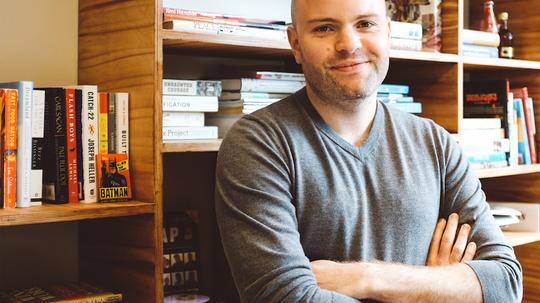
After several years working in finance and real estate in Philadelphia, Justin Rosenberg was looking to switch gears. So, naturally, he turned to the three things he was most passionate about: design, technology and food.
That was in 2009. In June 2012, he opened his first restaurant.
Honeygrow is a fast-casual salad and stir-fry spot that incorporates new technology into their day-to-day operations, such as, most notably, using virtual reality headsets during training and recruiting of new employees.
He opened two restaurants in the D.C. area in 2016: the Chinatown space launched in December and Pentagon City in August. They currently have 18 locations in eight different states and the District.
"We'll be opening around eight more this year," he said. "From Manhattan to Rockville and Tysons Corner. We're aggressively looking at D.C., from Navy Yard to DuPont to Farragut."
They've raised about $52 million to date across four rounds, with their $20 million series D round closing in November 2016.
While the VR training concept launched in May, bringing new technology into their business model has been the big idea since day one. Honeygrow was the first fast-casual restaurant to create customer-facing proprietary ordering kiosks. Rosenberg said he got the idea for the kiosks at the Foggy Bottom Whole Foods.
"I was working in D.C. and I saw them and thought, 'This is awesome.' I figured I can do what they're doing, but make it way better, more attractive, more engaging," he said. "I wound spending some money on the photos, even though it would've been way easier to just get stock photos. The real thing is so important to us."
Rosenberg said they spent six days with a photographer, capturing photos of every food item. Ordering kiosks are now commonplace at fast-casual or fast food restaurants - places like Panera and McDonald's have launched them in some stores, as well.
Most of the technology involved in Honeygrow is inspired by what Rosenberg stumbles upon in his day-to-day life. In November 2015, he received the Google Cardboard VR headset through a promotion for New York Times subscribers. After that, he wanted to find a way to bring VR to the company.
"We made it really fun and attractive and engaging, so it's a cool first impression and a great way to introduce new recruits and new employees to Honeygrow as a concept," he said. "No one else, from my knowledge, is using it."
Honeygrow softly launched their app about six weeks ago. Rosenberg worked with video game designers to create an in-app game, in which users can win loyalty points to collect up to $2.50 off their Honeygrow purchases a month.
As they roll out new technology, Rosenberg said, it's also important that they build ties with the communities they come into. Chief brand officer, Jennifer Denis, said they recently launched a fitness initiative called HG Athletics.
"The idea is that it doesn't take much to get active, anything can be athletic," she said. "Pop-up yoga in the park, a monthly run club, a hike, a surfing excursion."
They also feature work by local artists in their stores. Chinatown's location features a mural by JD Deardourff and Pentagon City showcases work by Kate MacDonnell.
"From the get-go, our athletic events, our run clubs, hiking events, all of these things are fun ways to engage the community in a way that nobody else is doing," Rosenberg said.
Image used via Honeygrow




